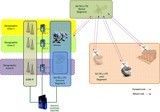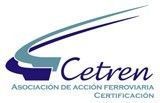
-
StatusCompleted
-
Status date2013-07-25
-
Activity Code1D.012
The SATCOM rail project addresses the specification of a framework for the introduction and authorisation of Satellite Communications in support of railway safety and liability critical applications and services.
In addition, the study identifies, describes and evaluates the most promising satellite communication solutions candidates to meet the requirements, either as self-standing solution or complementing existing terrestrial communication networks.
The purpose of this project is to pave the way for the introduction of satellite communications in support of railway safety and liability critical applications, by providing an understanding whether and under what conditions satellite communications can be introduced in this domain and provide added value over existing and future terrestrial solutions.
The main elements to be addressed are:
- To identify which railway (safety) applications and services can be supported by satellite communications.
- To expose how satellite communications solutions could improve existing terrestrial communications in the railway domain.
- To explain how satellite communications can be adapted to the railway communication network.
- To specify the requirements that a satellite communication system shall satisfy and to provide guidelines for the development and operation of these solutions in order to be approved and authorised in the scope of railway safety applications.
- To propose alternative communication architectures for railways including satellite communication, which meet the identified requirements for communication solutions.
- To assess the economically viability of introducing satellite communications in railway operations, including an identification of the market opportunities and a cost-benefit analysis in relation to existing systems and their operation and maintenance.
The key issue to be addressed in this project is to specify an Authorisation Framework for satellite communications mainly oriented to railway safety applications, in addition to identify and describe the most promising satellite communication system candidates to accomplish this challenge.
Some of the challenges associated with arriving at an Authorisation Framework and then to be finally authorised are:
- To identify what requirements are demanded by the applications and how these requirements could be expressed independently of the current technology. An important matter is to characterise the data traffic model.
- To study if satellite communications are suitable to provide the required latency, coverage, data rate, etc., and to propose adequate architectures or combination of architectures in order to account for the needs and requirements of the identified applications.
- To analyse the implications and constraints of introducing a third party service provision.
- To define the process and actors involved in the authorisation and to assess if satellite communications are able to satisfy railway specifications, including the conformity with relevant TSIs.
The increasing needs for wireless communication in railway applications forces to look for alternatives to terrestrial networks which have high deployment and maintenance costs. Satellite communication comes up as a possibility which is worth analysing due to the maturity of the technology and the possible benefits it could bring, especially in large open areas. Some key strengths which can be provided by satellite communications are the rationalisation of track side equipment (GSM-R antennas no longer needed) or the benefits of having a single service provider, avoiding roaming and interoperability issues.
In the liberalized railway market scenario, satellite communication services can fulfil requirements and needs for all the market stakeholders; infrastructure managers, train operator companies, train management and maintenance parties, and even the passengers, will be able to improve their capabilities, tools and performances, by using them.
This aspect should be considered then as a key-factor for the business side of the satellite communications technology application for railways, because ensures diversity of customers with diversity of needs and requirements, which can be satisfied with a common infrastructure, optimizing the investment from the satellite operator point of view, always ensuring totally channel independence and isolation for both safety and safety-related applications.
This study has two main phases. The first one addresses the identification of railway (safety) applications supported by communication features and the analysis of the regulatory framework applicable for introducing communication solutions. This assessment will lead to the identification of the requirements applicable to communication systems in railway and subsequently to the specification of the set of requirements for authorisation of satellite communication solutions in the railway domain.
The second phase of the project deals with optional satellite communication architectures which could support the railway applications under consideration. With this regard, the SATCOM rail project will identify several satellite communications systems, including hybrid solutions, in order to evaluate if they meet the requirements for the communication solution as identified at the initial phase of the project.
The project will also conduct an economic evaluation of the satellite communication based solutions proposed, in order to evaluate the economic viability of the satellite communication based solution(s). This project will also include a gap analysis in order to understand what and how many points should be modified, improved and/or added, on each satellite communication architecture if they aim to be used for railway safety applications.
The satellite railway architectures to be studied are broken down in three main segments:
- User Segment
- Ground Segment
- Space Segment
The following figure shows a generic SatCom architecture for railways.
Due to particularities of railway, where tunnels and lots of elements can difficult direct visibility with satellites, hybrid architectures with satellite communications systems and terrestrial wireless systems seems to be essential to provide railway safety applications with satellites.
SATCOM rail is a 12 months project starting on 28th February 2013. The study has been divided into four work packages:
- WP1000: Railway Authorisation framework definition
- WP2000: Railways Communications Architecture: evaluation and cost assessment
- WP3000: Conclusions and recommendations
- WP4000: Project Management and Quality Assurance






